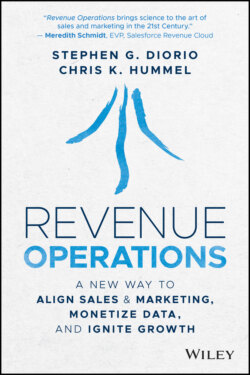Читать книгу Revenue Operations - Stephen Diorio, Chris K. Hummel - Страница 24
Twentieth-Century Tools Are Obsolete
ОглавлениеEach of these forces has disrupted the status quo in marketing, sales, and service. Collectively, they have made traditional notions of how to manage growth obsolete. Managers try to manage revenue teams and activities that require a far more advanced and digital selling model than the systems and tools developed in the twentieth century can provide.
Using an obsolete commercial model to manage a modern selling infrastructure has significant business consequences. Managing marketing, sales, and service resources as discreet functions is an obstacle to teamwork. The idea of a linear and orderly customer journey – with advertising in the front, selling in the middle, and service and support at the end – just doesn't work because customers don't buy that way. The historic reliance on traditional print advertising and in-person human selling as pillars of investment for marketing and sales sharply declines as the number of customers who prefer to buy online increases.
The financial consequences of relying on a commercial model developed in the last century to manage a twenty-first-century selling system are large. For example, the uncoordinated management of the revenue cycle leads to revenue and margin leaking through “air gaps” and handoffs in the customer journey. Organizations can leak 10 percentage points of EBITDA by failing to follow up on opportunities, enforce pricing discipline, respond to buying signals, or recognize when their biggest customers are about to take their business elsewhere. The disconnected management of the valuable technology, customer data, and digital infrastructure assets that support revenue growth can create even bigger financial problems. If you don't have a coherent system for curating and connecting these growth assets into selling outcomes that create value, the result will be lower than acceptable financial returns on investment and higher selling costs. Managing these valuable growth assets in many different functional silos is the equivalent of racing an expensive car that is not firing on all cylinders and needs a wheel alignment and a tune-up.
Management models have always evolved with economic and market change. The corporation, conglomerate, and business unit structures pioneered by Rockefeller (Standard Oil), Reginald Jones (GE), and Alfred Sloan (GM) respectively were all structural innovations that served their purpose in their time.
The world has changed. Dramatically. The “stovepipe” organization consisting of separate marketing, sales, and service functions is a vestige of another era when media had greater reach, digital channels were just emerging, and customers followed an orderly and linear buying process. The CMO role emerged when business could get by with a big media budget to drive demand. The VP of sales when managing “sellers” was the key to closing deals. Roles like sales operations, customer insights, and digital marketing did not even exist 25 years ago because digital technology and customer data were not key components of the selling formula.
